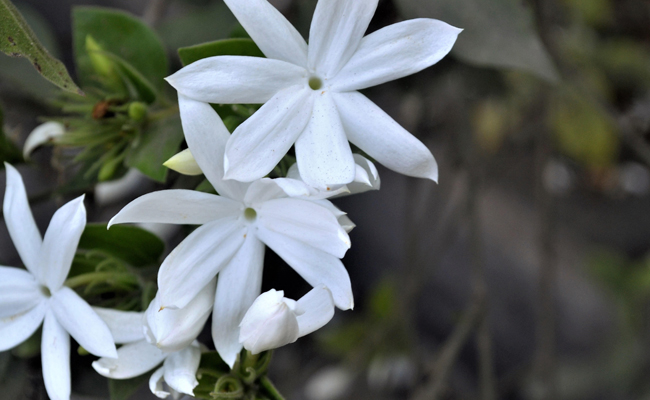Secret Tips to Make Indoor Jasmine Plants Flourish
When it comes to fragrant flowers, jasmine tops all the rest. Classified under the genus Jasminum of plants, jasmines belong to the family Oleaceae. Known for its fragrance and exquisite beauty, the Jasmine flower has long been an area of interest for many gardeners. Widely cultivated for its rich, intense scent jasmine has always been a popular species not only for gardening purposes but also for perfume as well as medicinal uses. Jasmine is considered sacred in India and has spiritual significance.
Whether you are growing jasmine indoors or outside in the garden, you may be worried when your jasmine does not bloom. After nourishing and caring for the jasmine indoor plant, you may wonder why the jasmine flowers are not thriving. In today's blog, we are going to provide you with tips and tricks on how to make jasmine plant indoor bloom.
Constant blooms, divine aroma and attractive green leaves are characteristic of one of the most famous aromatic flowering plants around. The best blooming plants are well cared for and fed regularly. Scroll down to learn the secret tips to make your jasmine plant flourish!

Choose the Right Jasmine Plant
As is often the case with common names, various 'jasmine' shrubs do not belong to the jasmine family. These are called 'false jasmine' because they often share the same characteristic white colour, and rich fragrances yet differ in their growth and maintenance needs. So, it is essential to choose the right jasmine plant. Here are a few jasmine plants which you can grow indoors
- Jasminum polyanthum
- Jasminum Grandiflorum
- Jasminum Nudiflorum
- Stephanotis floribunda
Talking about false jasmine plant, they are namely:
- Trachelospermum Asiaticum (Star Jasmine)
- Cestrum Nocturnum (Cape Jasmine)
- Gardenia Jasminoides (Night-blooming Jasmine)

Growing Jasmine Indoors
Jasmine will bloom indoors if given proper care;
Sunlight: This plant requires a lot of sun, so if you do not have a south-facing window available with lots of sunlight, then benefit your jasmine plant for a few hours of being outdoors in the sun. The bud blossoms as autumn arrive. The fresh, well-circulated air is excellent for encouraging winter blooms; If the temperature is too hot, the plant will not bloom.
Watering: Jasmine plants require a lot of water, especially when they are in bloom. It is best always to keep the soil slightly moist. The plants should be watered weekly, but if the soil dries before this, water the plant early. If jasmine is grown indoors, the soil should be moist and well-drained, but not in water. Allow the soil to become moist during summer and let it dry between water.
Fertilizer: When fertilizing a Jasmine plant, use a fertilizer that is rich in potassium and phosphorus.
Pinching and Pruning: When you start seeing new growth on a jasmine plant, you should start pinching the stems to promote growth. This process should be completed during the first two years of plant life, and you should only pinch the top half-inch of the stem. Once the blooming season is complete, you should also consider pruning the plant.
So, these were some tips on how to grow jasmine plant indoor and keep it flourish. Before we go, let us provide you with some interesting facts about jasmine flowers.

Some Facts About Jasmine
- Jasmine flower reach a height of 10–15 feet, growing about 12–24 inches per year.
- Jasmine leaves are either evergreen or autumn.
- The jasmine stems are thin, black, green, shiny, fickle and about 4-sided.
- Most species of Jasmine bear white flowers, which are about 1 inch in size.
- The Jasmine oil, which is a very popular fragrant oil, contains benzyl acetate, terpinol, jasmone, benzyl benzoate, linalool, several alcohols, and other compounds.
- The two types of Jasmine used for oil production are Jasminum grandiflorum and Jasminum officinal.
- Among the essential oils extracted from jasmine is the perfume and cosmetics industry. They are used in the manufacture of soaps, lotions, shampoos and creams.
- The scent of jasmine produces a calming and relaxing effect and has soothing properties.
- Dried jasmine flowers are used to make jasmine tea. A mixture of jasmine and green tea is very popular and often a type of tea in Asia.
- Syrup made from jasmine flowers is used as a flavour enhancing agent in the food industry.
- Jasmine is used to relieving tension and headaches. It can reduce the symptoms of PMS, and relax the uterine muscles.

Here we end our blog. Hope the above tips will help you nourish your beautiful jasmine plant. Happy Gardening!















